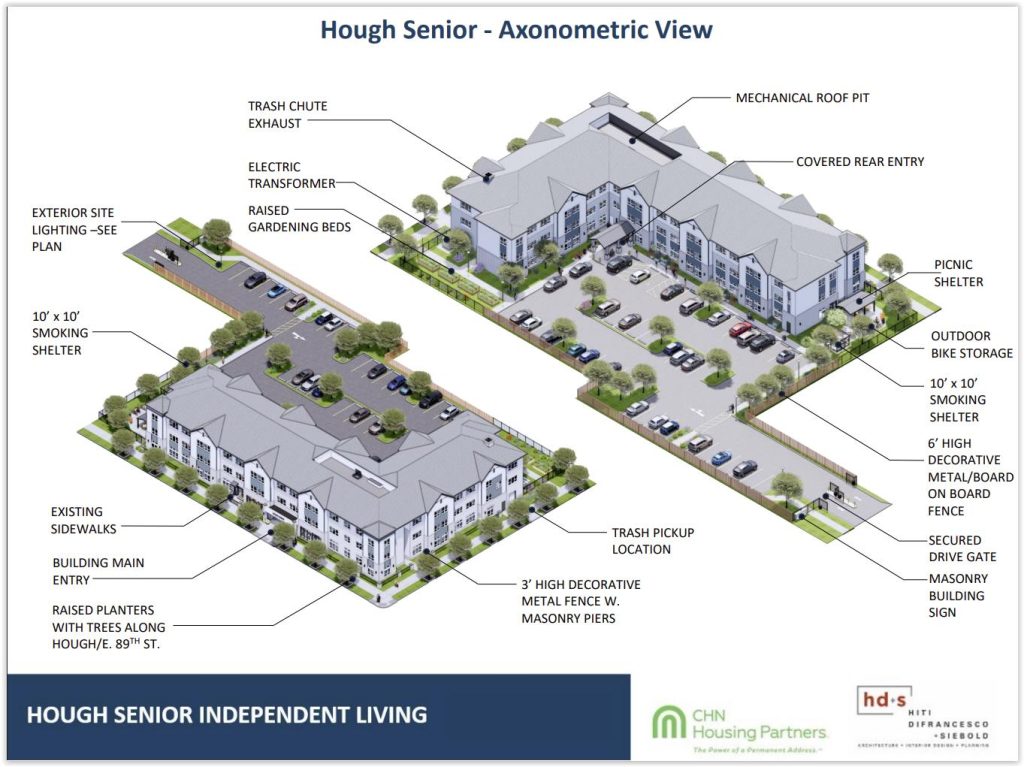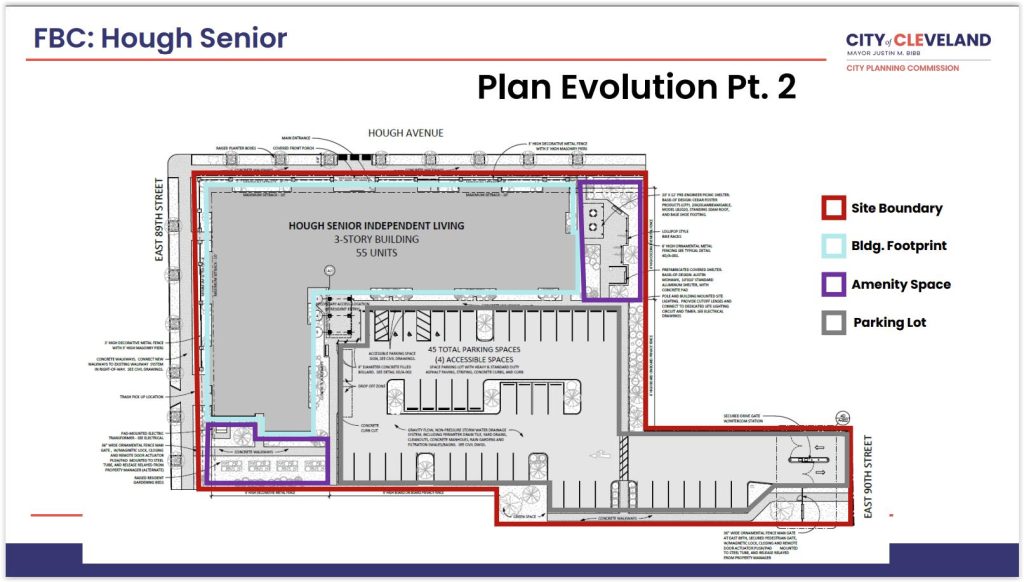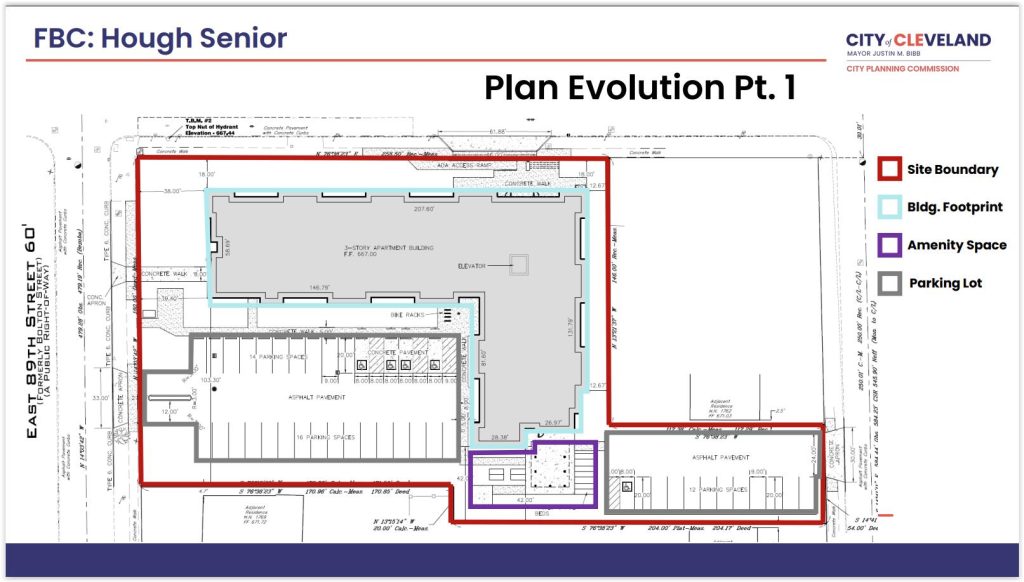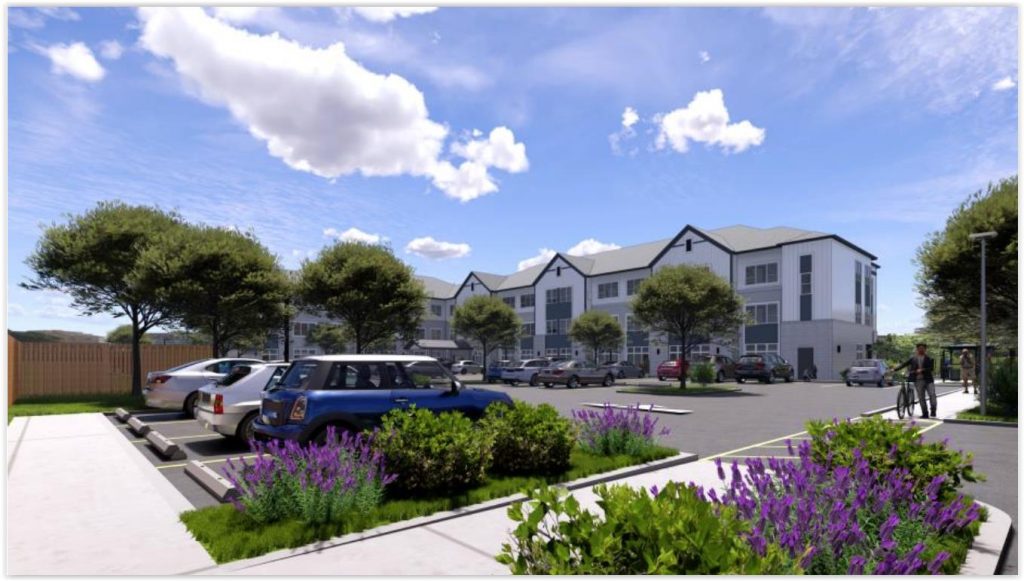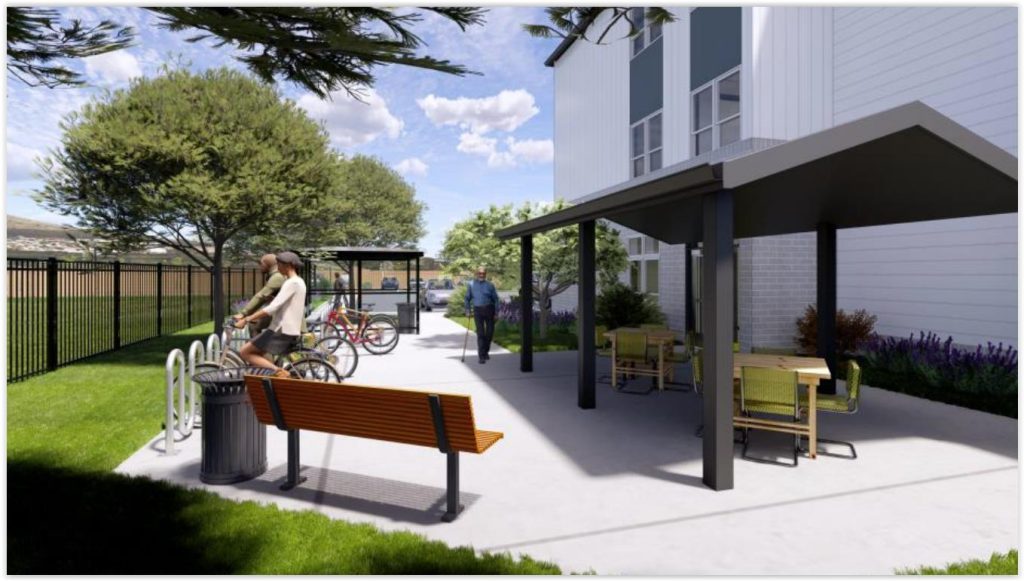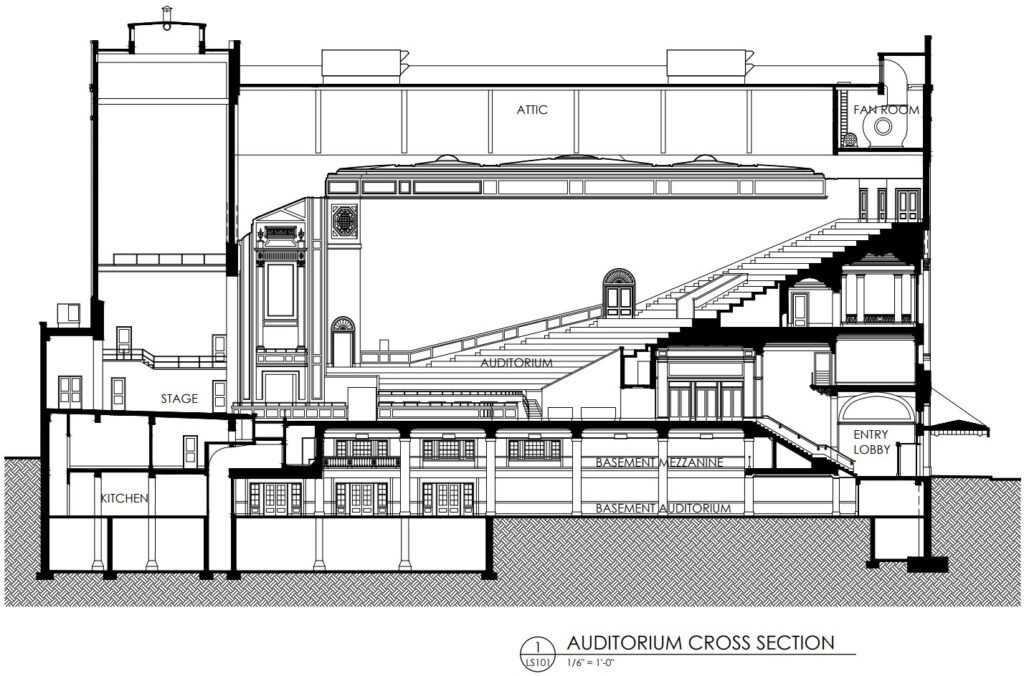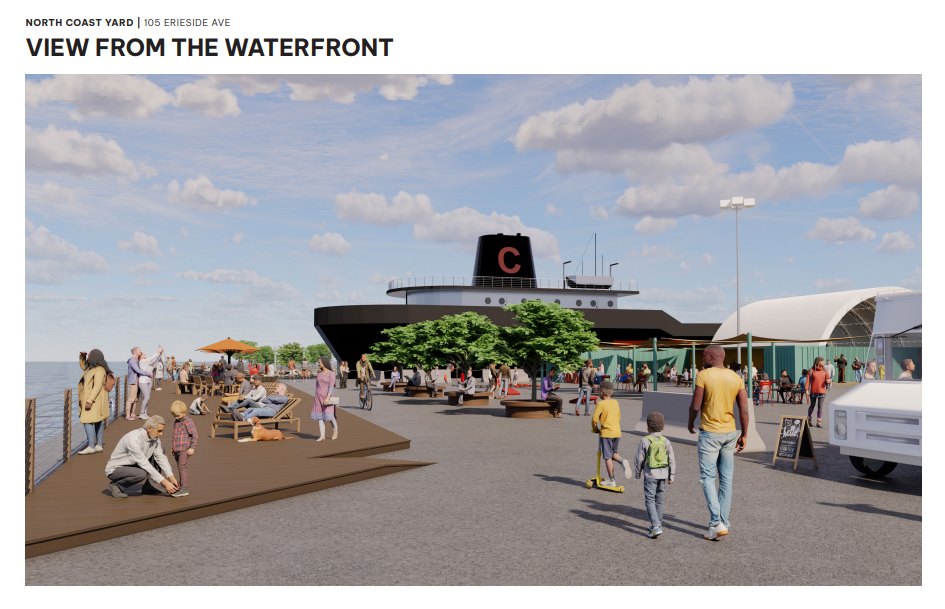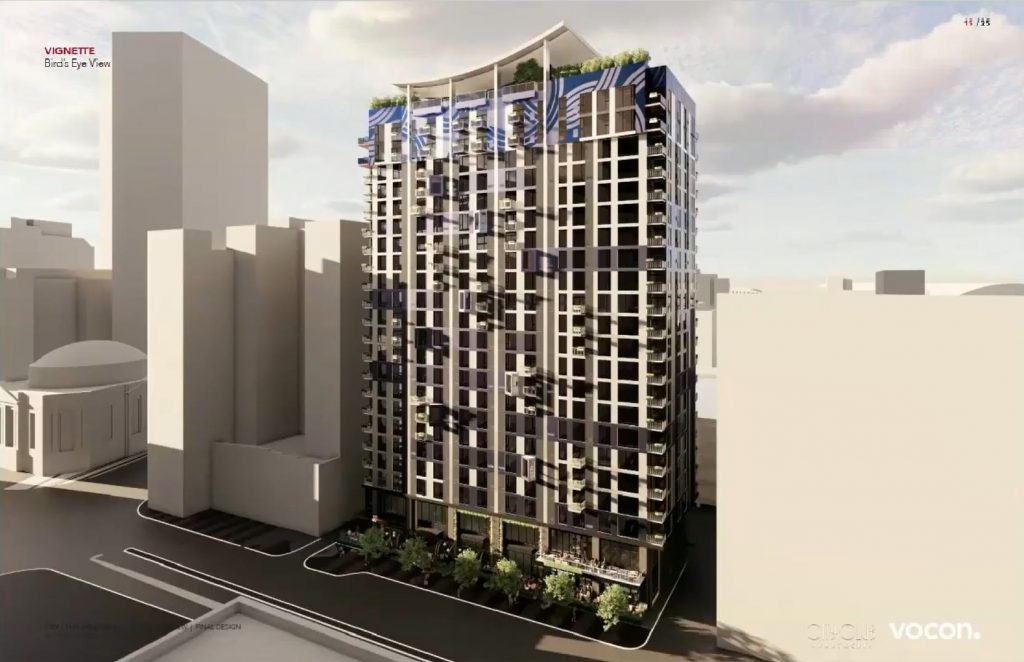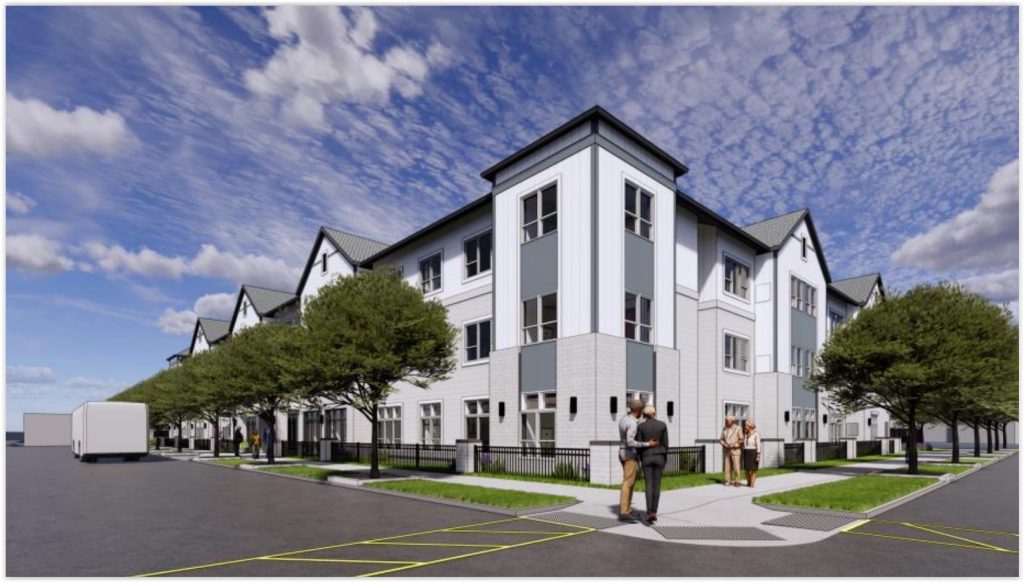
At the southeast corner of Hough Avenue, left, and East 89th Street, CHN Housing Partners plans to build Hough Senior Independent Living. This project was rapidly approved by the city and improved in its design because it is located in one of Cleveland’s four new Form-Based Code zoning pilot areas (HD+S). CLICK IMAGES TO ENLARGE THEM.
First Form-Based Code project OK’d quickly
Cleveland City Planning Commission today approved designs for a 55-unit affordable senior housing development in Cleveland’s Hough neighborhood. While that isn’t such a big story anymore, given the heightened pace of investment in this former poster child enclave of urban decay, it is when you consider the plans for this project were submitted to the city only in May.
The rapid turnaround from submission to approval was made possible by the city’s first major change to its zoning code since 1929. And, even then, it’s one of four pilot districts where the city’s new Form-Based Code is being tested. The code doesn’t yet exist citywide despite being under consideration for more than five years.
That might change soon considering how fast the proposed Hough Senior Independent Living, 8910 Hough Ave., advanced through what had been the city’s sometimes frustratingly slow and costly design approval process. The project will fill one of many vacant lots in Hough.
“Let’s see how this streamlining works and hopefully this will attest that to the fact this has been an amazing process,” said Planning Commission Chair Lillian Kuri. “This has been a long time coming because this is has been a long process to pilot the Form-Based review, get it approved, get it to council. And so if this works really well for you (project applicants), you’re going to help the whole city of Cleveland.”
Not only did the approval process work quickly, it also worked well, said commission Vice-Chair August Fluker. He argued it produced a better end-product.
“I think if we can have where you started versus where you are today, this is a superior siting,” Fluker said. “The building addresses the corner. The parking is swept away. Just the overall appeal and look of the project, I believe, is successful. I think it speaks to the Form-Based Code because it’s prescriptive. I think that’s a win in my mind. We’ll figure out the process.”
While the current design for the Hough Senior Independent Living was submitted in May, an earlier variation was submitted by developer CHN Housing Partners and its architect HD+S Architects, both of Cleveland. In February, they submitted a design based on the old zoning code. When the new code was adopted, it submitted the new design.
HD+S Associate Brian Grambort and Design Architect Gabriela Allende said the Form-Based Code was clear and helpful despite some initial misunderstandings. They added that the project’s design under the old zoning code would have required a variance from the Board of Zoning Appeals, adding more delay and complexity to the project development process.
This $17.5 million housing development offers independent living for residents age 55 years and up. It will feature a single, approximately 50,000-square-foot, 3-story apartment building with all one-bedroom units measuring about 620 square feet each. CHN was awarded low-income housing tax credits for the project in May 2024 by the Ohio Housing Finance Agency.
Common areas for the development will include a community room, pantry/kitchen, laundry rooms, lobby/lounge, outdoor patio, elevator, management office, and mailbox area, along with back-of-house support spaces. There will be 45 off-street parking spaces — three more than under the old plan — with driveway access off East 90th street.
More projects are about to test Cleveland’s new zoning code. In the only Form-Based Code pilot district on the city’s west side, a housing development was submitted to the city for review this week.
The project, 8400 Lake, was redesigned not only to reduce its construction cost so its developers could afford to deliver a “missing middle” project for the middle of the market. It was also redesigned to be quickly approved under the new zoning.
Shannan Leonard, the city’s chief zoning administrator, said the zoning classification for that development site as well as the Hough project is UX3 — Urban Flex, allowing buildings up to three stories or 42 feet in height.
UX3 is intended to provide moderate intensity mixed-use office and residential buildings intended to accommodate a variety of residential, retail, service and commercial uses in a vibrant pedestrian-friendly environment.
The Hough design was unanimously approved. The project met all Cleveland building code requirements and design review guidelines. It would not adversely effect the context of the neighborhood with traffic, parking, public health, safety and welfare. And the commission said the design will not result in destruction/damage of any natural or historic sites/features.
Some projects could be approved even more quickly. Lighter density developments with fewer than 20 housing units and/or 20,000 square feet can be approved administratively by city planning staff without going to planning commission. Even so, this project was approved in much less time than it would have otherwise.
“It would have taken significantly longer because local design review for this (plus the full commission) would require the full six meetings,” Leonard said.
“It’s a lot of pressure,” Kuri joked, in noting the project applicant’s pioneering effort. “I’d like to suggest a plaque for the first project that made it through the Form-Based Code.”
END

